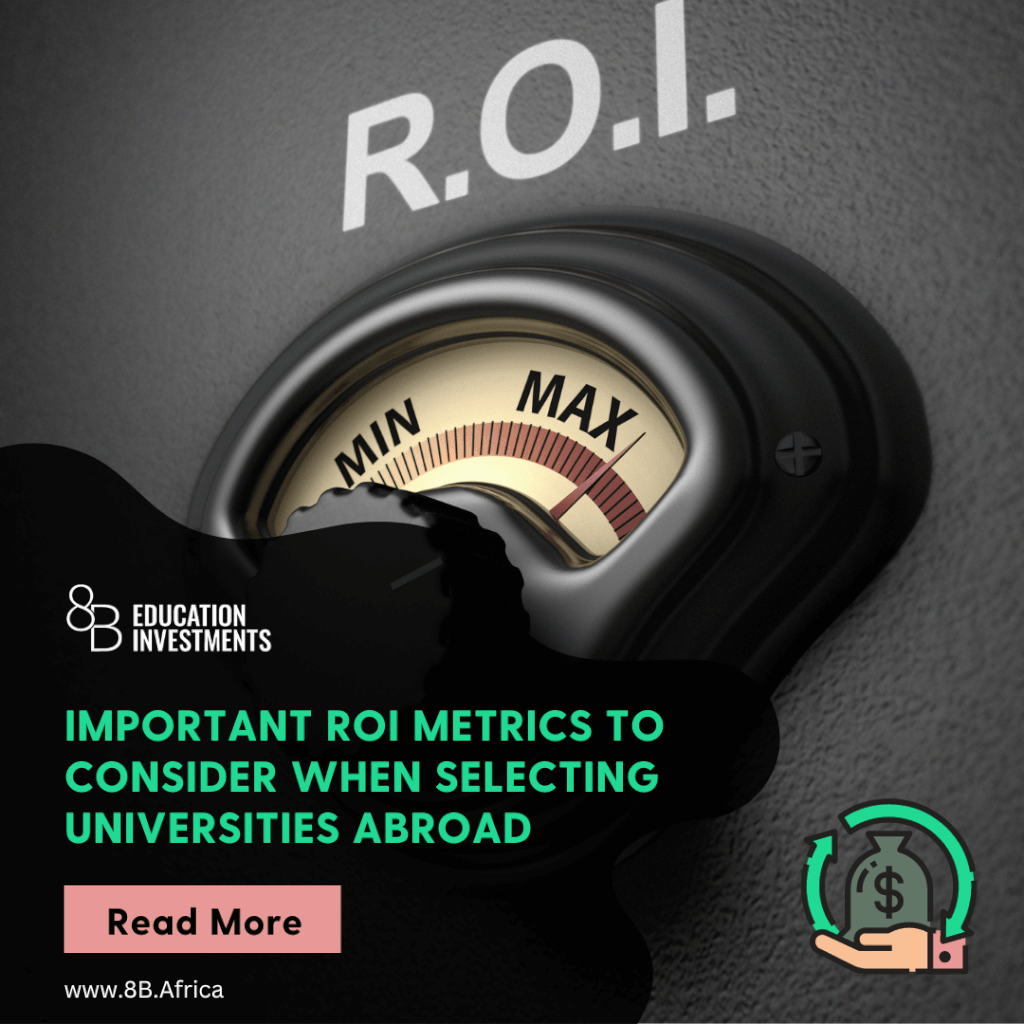Paying for a college degree abroad is a big investment towards your future. As an international student in the U.S, it can cost you as much as $25,000 to $45,000 USD per year in tuition and living expenses.
It’s important to ensure that you get good returns on your investment. When selecting universities abroad, it’s advisable to analyze key scorecard data – since your alma mater can significantly affect your career outcomes.
According to a report by Georgetown University Center on Education and the Workforce, the earnings of college graduates can vary vastly depending on their alma mater. The report showed that first-year earnings for the same degree can vary by as much as nearly $80,000.
In general, graduates from highly selective colleges with familiar names have higher earnings – although that isn’t always the case.
Graduation Rates
Graduation rates are a crucial metric to consider when selecting universities abroad. These rates indicate the percentage of students who successfully complete their degree within a certain period, usually four or five years.
When analyzing graduation rates, it is important to consider several factors to get a clear picture of the university’s quality of education and support.
One key aspect to keep in mind is the timeframe. Different universities may use different timeframes to report their graduation rates, so it is essential to compare them correctly. Additionally, it is helpful to look at program-specific graduation rates to get a better understanding of the university’s performance in specific academic areas.
Retention rates, which reflect the percentage of students who continue their studies from one year to the next, can also be a valuable metric to evaluate alongside graduation rates. High retention rates suggest that students are satisfied with the university and are receiving the support they need to succeed.
When considering graduation rates, take into account the various factors that can affect these rates. The level of academic rigor, the availability of academic support services, and the quality of faculty are some of the factors that may play a role. Therefore, it’s recommended to ask the university about the support services they offer to help students succeed, such as tutoring, mentoring, and counseling.
Graduate Employment Rates and Earnings

Graduate employment rates and graduate earnings are another important ROI metric to consider when selecting universities abroad.
Graduate employment rates refers to the percentage of graduates who find employment within a specific time frame after graduation, which is usually within six months or one year. On the other hand, graduate earnings refers to the average salary of graduates within a specific period after completing their degree.
Evaluating these can provide insight into the employability of the university’s graduates and the quality of education they received.
However, when analyzing graduate employment rates and earnings, it’s essential to consider several factors.
Firstly, ensure that the universities you’re comparing report employment and earnings for the same timeframe. Additionally, examine program-specific metrics – employment prospects may differ significantly between programs.
Factors such as the university’s location and industry connections can also impact graduate employment rates and their average salaries. For example, a university located in an area with high job growth in a particular industry may have higher employment rates for graduates in that field.
Similarly, universities that have strong relationships with industry partners may have higher employment rates due to a greater number of job opportunities available to their graduates.
Another important aspect to consider is the type of employment that graduates secure. A high employment rate may be positive, but if the majority of graduates are employed in low-paying jobs that do not utilize their degree, this may indicate issues with the quality of education provided.
Student-Faculty Ratio
Another key metric that you should look at when selecting universities abroad is the student-faculty ratio.
Student-faculty ratio refers to the number of students per faculty member.
Why is it important?
Because it can give you an idea of the amount of individual attention and support that students can expect to receive.
Here are some things to consider when looking at student-faculty ratio:
- Classroom experience: A low student-faculty ratio can lead to a more personalized classroom experience, allowing for more individualized attention, small group discussions, and opportunities for students to participate in research projects.
- Availability of resources: Universities with a low student-faculty ratio may be able to offer more resources and support to their students, including academic advising, tutoring, and research opportunities.
- Accessibility of faculty members: Students at universities with a low student-faculty ratio may have greater access to their professors, leading to more mentorship opportunities and potential connections in their field.
- Course availability: A low student-faculty ratio may also mean that courses are more readily available, as there are more faculty members available to teach courses.
- Cost: Universities with a low student-faculty ratio may be more expensive, as they may require more faculty members and resources to maintain a low ratio.
Final Advice on Selecting Universities Abroad
Pursuing a university degree abroad is a big investment – and it’s important to ensure that you get the best ROI.
Considering metrics such as graduation rates, graduate employment rates, graduate earnings, and the student-faculty ratio is important.
Ultimately, choosing the right university abroad depends on a combination of factors, including personal goals, preferences, and resources. By carefully considering these metrics, you can make informed decisions and choose a university that aligns with your needs and aspirations.
Some tools you can make use of to research the metrics we’ve discussed include:
Join the 8B Community to connect with other African students in global universities, admission professionals, and mentors.
If you’re looking for financing to cover any funding gaps for your studies abroad, use the 8B loan comparison tool to find and apply for affordable international student loans.




